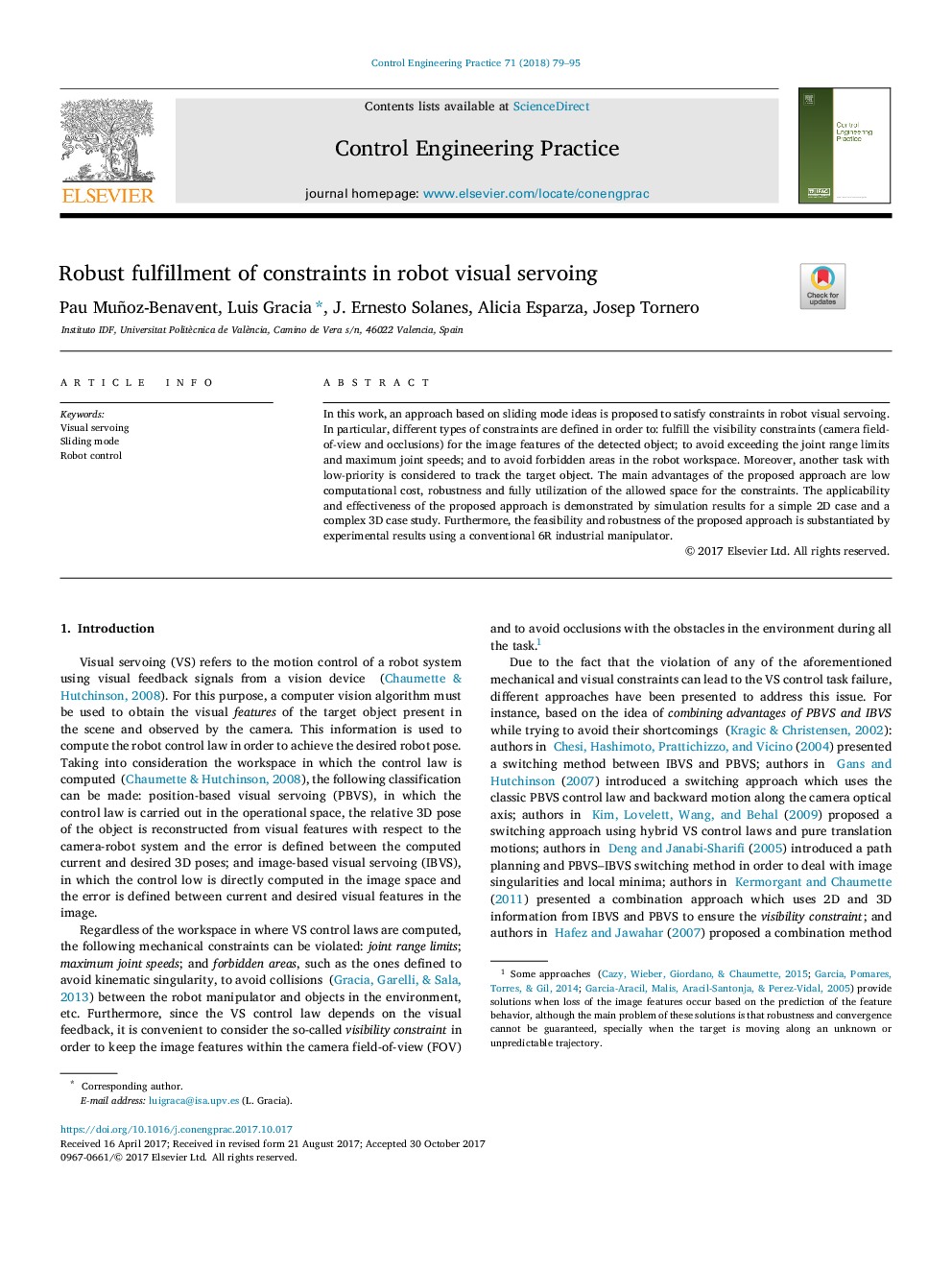| Article ID | Journal | Published Year | Pages | File Type |
|---|---|---|---|---|
| 7110508 | Control Engineering Practice | 2018 | 17 Pages |
Abstract
In this work, an approach based on sliding mode ideas is proposed to satisfy constraints in robot visual servoing. In particular, different types of constraints are defined in order to: fulfill the visibility constraints (camera field-of-view and occlusions) for the image features of the detected object; to avoid exceeding the joint range limits and maximum joint speeds; and to avoid forbidden areas in the robot workspace. Moreover, another task with low-priority is considered to track the target object. The main advantages of the proposed approach are low computational cost, robustness and fully utilization of the allowed space for the constraints. The applicability and effectiveness of the proposed approach is demonstrated by simulation results for a simple 2D case and a complex 3D case study. Furthermore, the feasibility and robustness of the proposed approach is substantiated by experimental results using a conventional 6R industrial manipulator.
Related Topics
Physical Sciences and Engineering
Engineering
Aerospace Engineering
Authors
Pau Muñoz-Benavent, Luis Gracia, J. Ernesto Solanes, Alicia Esparza, Josep Tornero,
